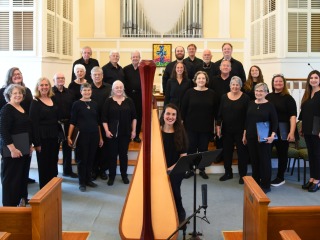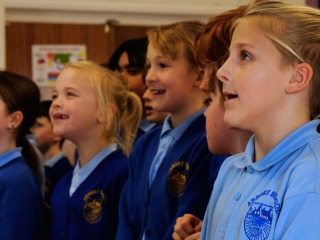An article for The Manx Independent (18th September 2024) written by Dr Chloë Woolley, Manx Music Development Officer at Culture Vannin.
“The words are simple and full of poetry, and are fraught with sweetly pensive home breathings for Ellan Vannin – the vernacular for our Island home”. So wrote Mrs M.A. Quiggin in the Manx Sun of August 1855. The bookseller from Douglas was urging a new edition of the song “Ellan Vannin”, because within a year of its release, it had “become a favourite wherever heard”.
Referring to the Gaelic name for the Isle of Man, “Ellan Vannin” is one of the best-known and loved of all Manx songs - its opening line “When the Summer Day is Over” stirring hearts for 170 years.
In 1854, poet Eliza Craven Green joined forces with Manchester music publisher John Townsend to publish a “new and elegant song” about the Isle of Man. Initially printed as a poem in the Manx Sun, it was announced that the song would soon follow “with music composed by Mr J. Roberts (probably meaning Mr J. Townsend), author of “The Evening Song of the Manx Fisherman”.”
The song’s nostalgic feel had particular appeal with Manx emigrants - by 1870 the song sheet of “Ellan Vannin” had already reached its 16th edition and it was further catapulted to fame after its inclusion in Manx National Songs in 1896.
Born in Leeds in 1803, young singer and actress Eliza Craven came to the Isle of Man with a touring theatre company. Lodging at Ballaughton Manor in Braddan, she and fellow actors had residency at the New Theatre in Athol Street, Douglas in the early 1820s.
The theatre closed due to financial difficulties, and Eliza moved back to Yorkshire, where she married comedian James Green. Her short spell on the Isle of Man left a lasting impression on her though, as along with “Ellan Vannin”, her subsequent poems often referred to her love of the Island, its people and legends.
““Ellan Vannin” to replace the National Anthem?” read a headline in the Isle of Man Examiner 1946, as the World Manx Association president asked members of its 52 societies to consider overturning the national anthem: “Ellan Vannin was always sung at Manx gatherings with great affection, and he thought a plebiscite might be held”. However, WH Gill’s “O Land of our Birth” of 1907 remained as the national anthem, despite only being officially recognised as such by Tynwald in 2003.
Possibly the most recorded Manx song, “Ellan Vannin” has never gone out of fashion. Back in 1928, the London Manx choir released a gramophone record, and more recently, dozens of Manx schoolchildren collaborated on a video during lockdown. As the first Manx singer on BBC Radio,
May Clague performed it in 1926 and HMV recorded it with the Lhon Dhoo Choir accompanied by Joe Loss and his orchestra. Girl band Twisted Angels produced a punk version in 2006,
Sravanti Mazumdar recently recorded it in Bengali, and star of the musicals
Sam Barks has also produced a version.
In 1997, Robin Gibb and King William’s College Choir once again elevated the song to fame as a
charity single. Originally in 3/4 time signature, this version was in 4/4 with modified lyrics. The Manx-born Bee Gees are honoured with a granite statue on Douglas Promenade, where the song lyrics reminiscent of their childhood home are engraved alongside the Manx translation by John Nelson.
Many years since Eliza’s poem of love and longing for the Isle of Man, the chorus still has resonance for Manx people around the world: “My own dear Ellan Vannin, with its green hills by the sea”.



